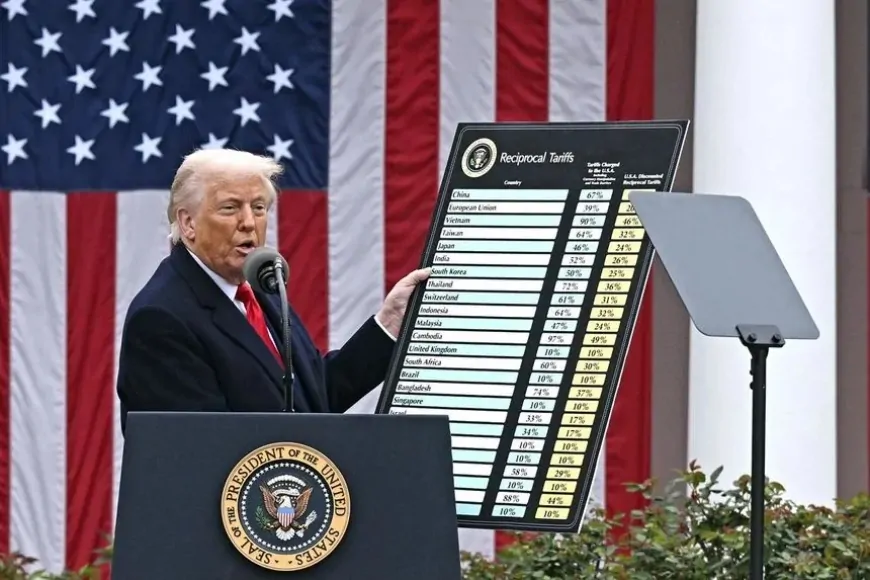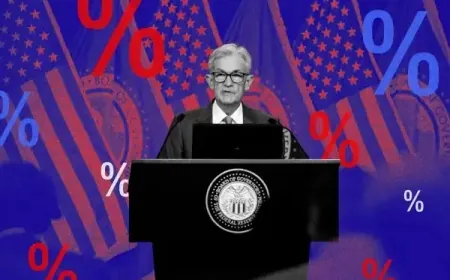Trump’s New Tariffs: Which Countries and Industries Will Be Affected Most?
New U.S. tariffs mean bigger costs for China, the EU, and online shoppers. From cars to Shein orders, here’s how these changes could affect you.

President Donald Trump has announced a sweeping set of tariffs aimed at restructuring the global trade landscape. Under the new policy, a 10 percent baseline tariff will be imposed on most imports, while certain nations will face significantly higher rates due to what the administration calls “unfair trade practices.” These tariffs, set to take effect in April 2025, are expected to reshape industries, influence consumer prices, and put economic pressure on key trading partners.
Countries Hit Hardest by the New Tariffs
While the 10 percent baseline tariff applies to nearly all imports, several countries will see much steeper duties beginning April 9:
-
China – A 54 percent total tariff, adding a new 34 percent charge on top of a 20 percent penalty imposed earlier this year.
-
Vietnam – A 46 percent tariff due to labor practice concerns and state subsidies.
-
European Union – A 20 percent tariff, primarily targeting steel, aluminum, and automotive goods.
-
Japan – A 24 percent tariff focused on the electronics and automotive sectors.
-
South Korea – A 25 percent tariff, affecting consumer goods and technology.
-
India – A 26 percent tariff, with a focus on pharmaceuticals and IT-related imports.
According to Trump, these tariffs are meant to counteract years of foreign nations imposing high duties and restrictive trade policies on American goods.
Industries Facing Major Disruptions
Automobile Sector
One of the most immediate effects of the new tariffs will be in the auto industry. A 25 percent tariff on imported vehicles and auto parts is expected to disrupt supply chains and drive up prices for U.S. consumers. Car manufacturers that rely on foreign-made components will need to rethink their production strategies, potentially shifting more operations to the U.S.
Steel and Aluminum Expansions
The tariffs on steel and aluminum imports will now extend to include canned goods, aluminum cans, and additional metal-based products. Companies that rely on these materials, from construction firms to beverage manufacturers, are likely to see increased costs that could trickle down to consumers.
Energy and Oil Markets Under Pressure
Nations that purchase Venezuelan oil will now face a 25 percent tariff on all exports to the U.S. This is part of an effort to limit Venezuela’s access to global trade revenue. However, this move could also contribute to rising energy costs and force refiners to seek alternative sources.
E-commerce and Online Retail Shakeup
A significant change is coming for consumers who rely on low-cost imports through online retailers.
-
Starting May 2, 2025, duty-free imports from China will end.
-
Orders from platforms like Shein and Temu will face a 30 percent tariff or a $25 per item fee, whichever is higher.
-
By June 1, 2025, the fee will double to $50 per item.
This shift could impact millions of shoppers who rely on affordable fashion and electronics, making many imported goods far more expensive.
Exemptions and Special Cases
While most U.S. trade partners are affected, Canada and Mexico are exempt from the additional tariffs due to existing agreements under the United States-Mexico-Canada Agreement (USMCA). However, they will still be subject to earlier 25 percent tariffs on certain products.
On the other hand, countries like Russia, North Korea, Cuba, and Belarus are also exempt, but not as a sign of goodwill—existing U.S. sanctions have already cut off most trade with these nations.
How Businesses and Consumers Will Feel the Impact
The tariffs will have far-reaching effects, with higher costs expected in key industries. Consumers could see price hikes on everything from vehicles to household goods, while businesses may face disruptions in supply chains. The long-term outcome will depend on how companies and foreign governments respond to these sweeping trade changes.
For more updates on financial policies and trade developments, stay tuned to iShookFinance.com.
Also Read: Foreign Boycotts Could Slash US GDP by $83 Billion in 2025 – Experts Warn





























































